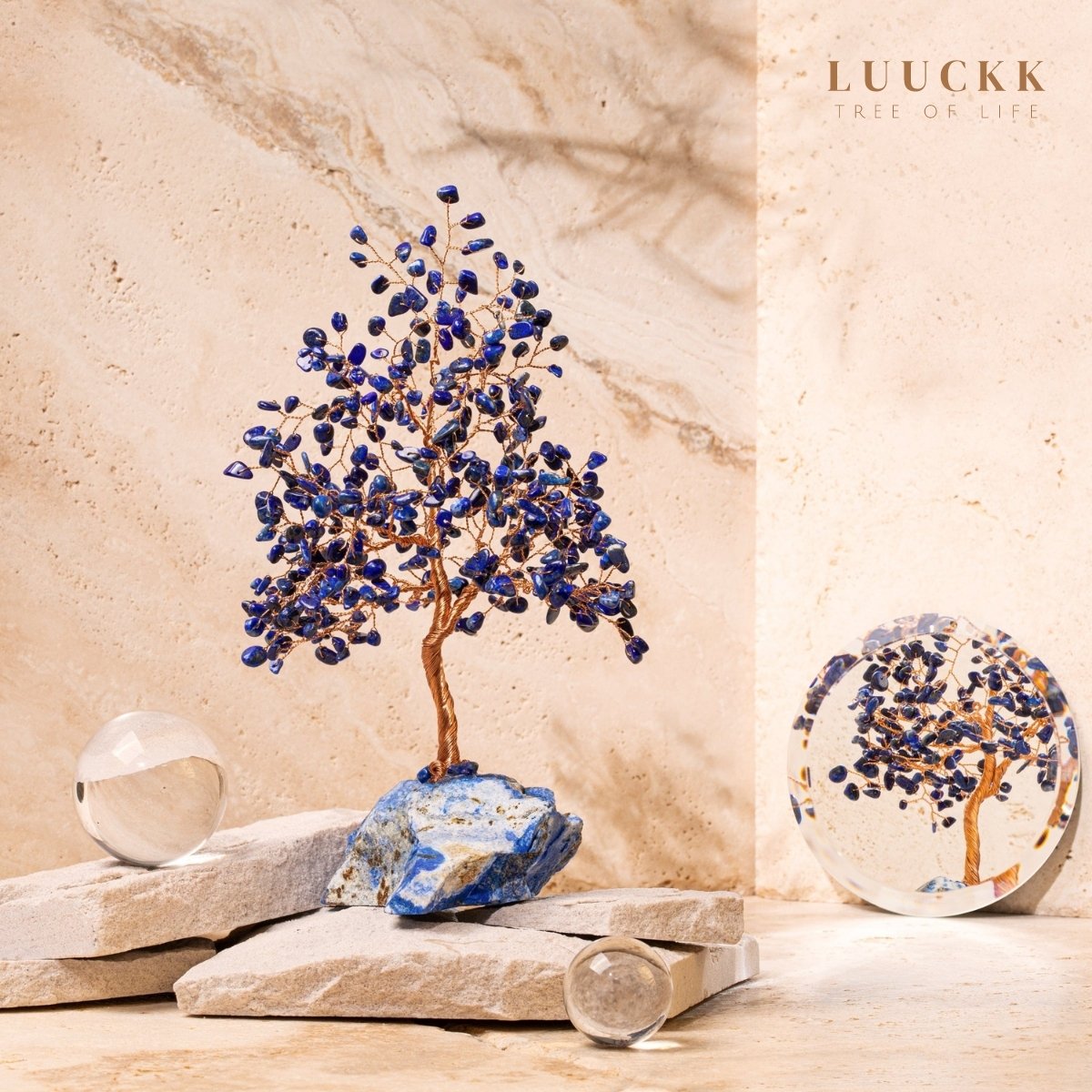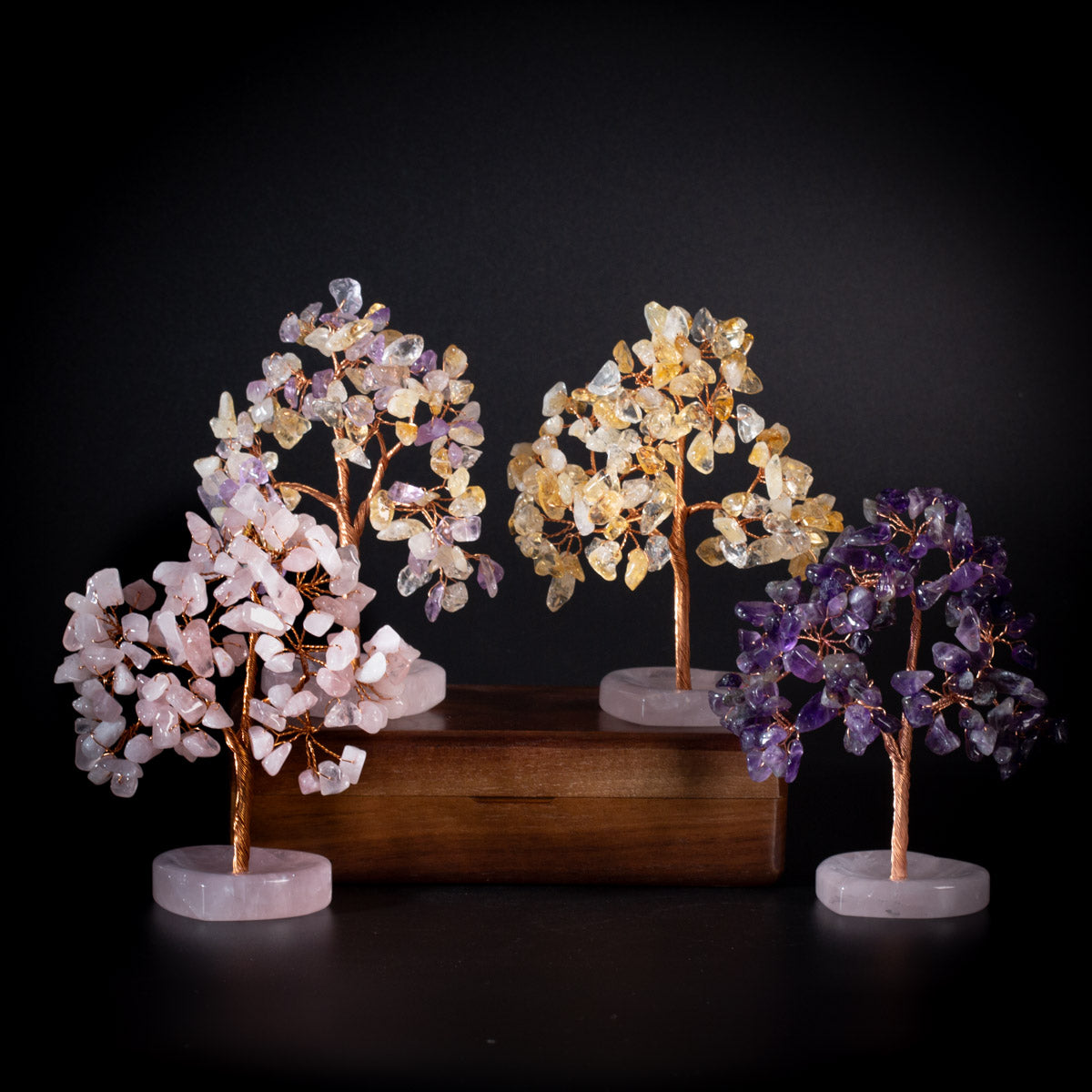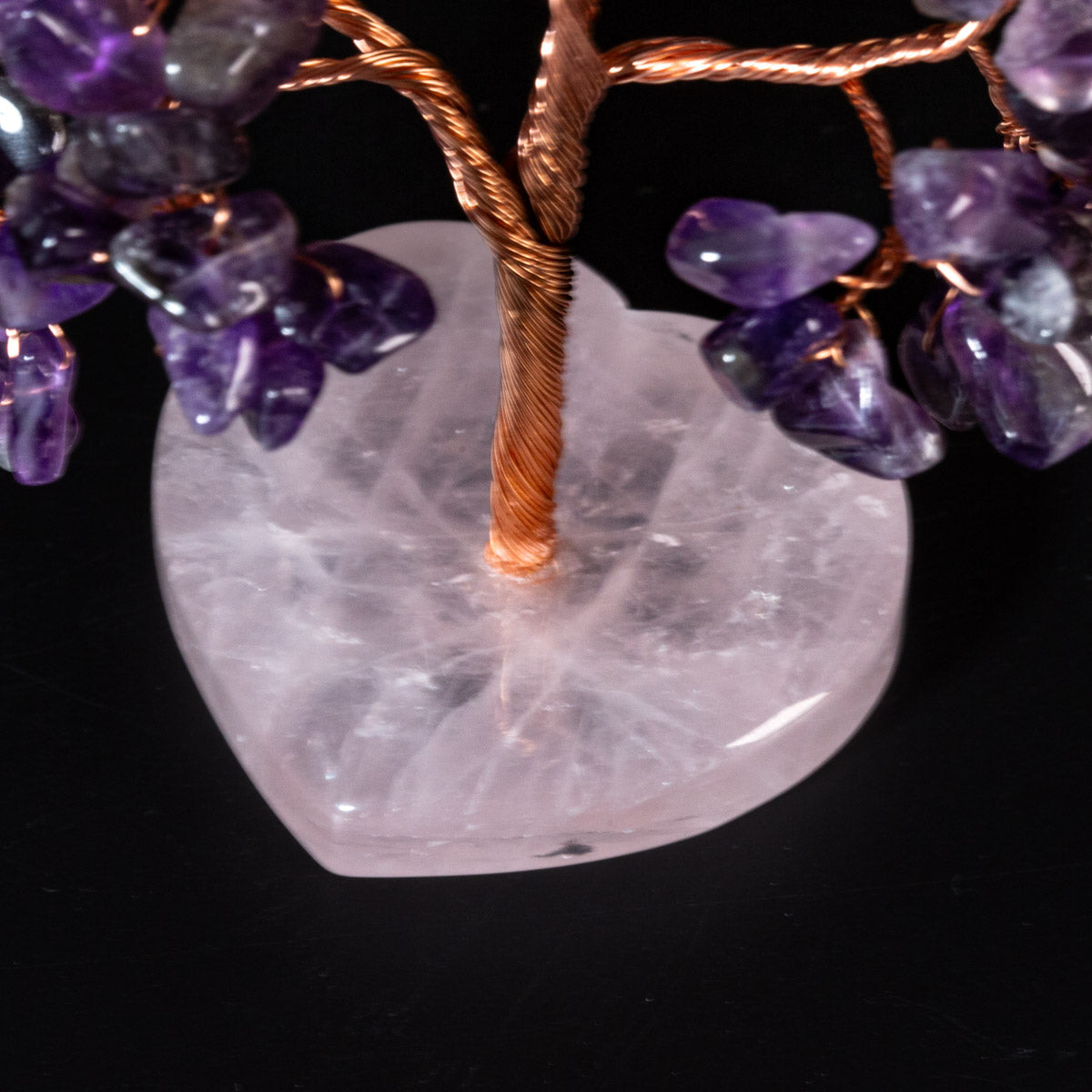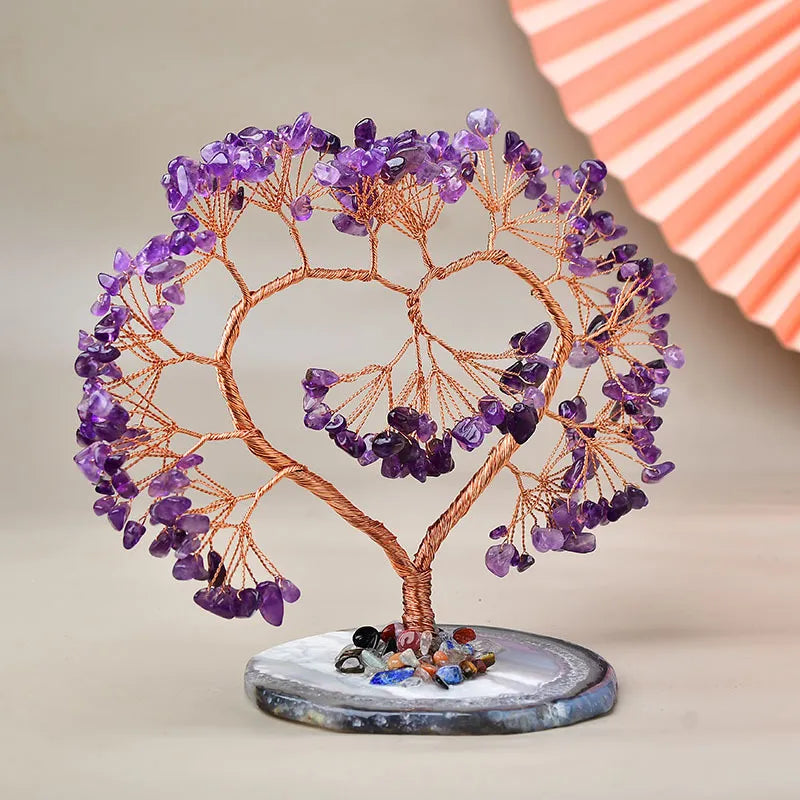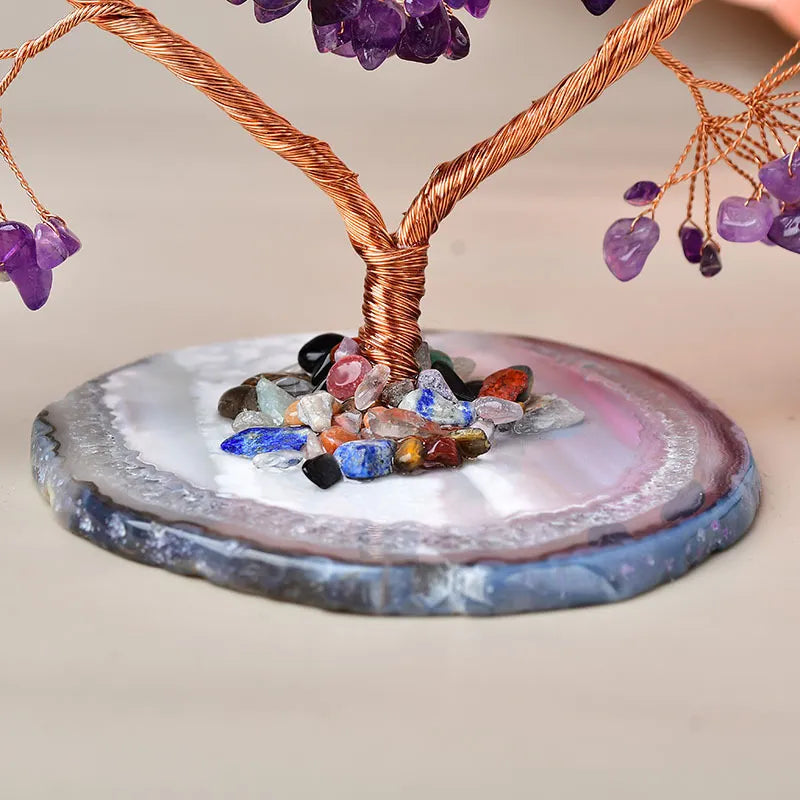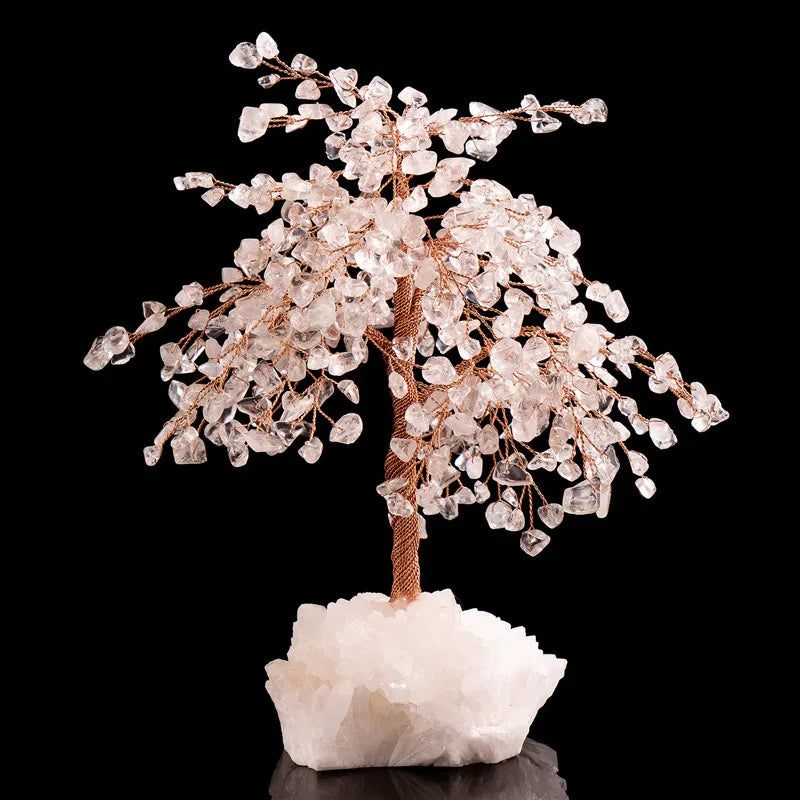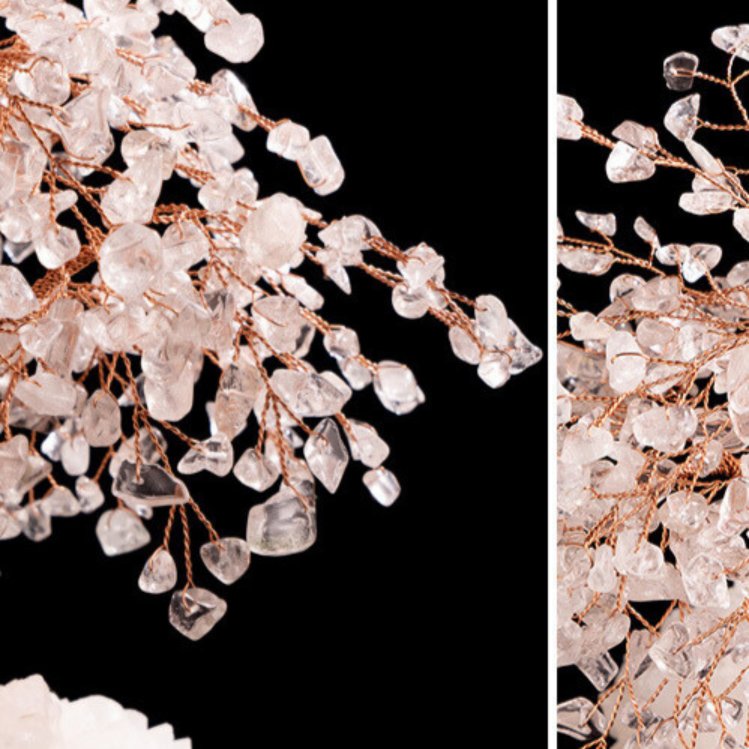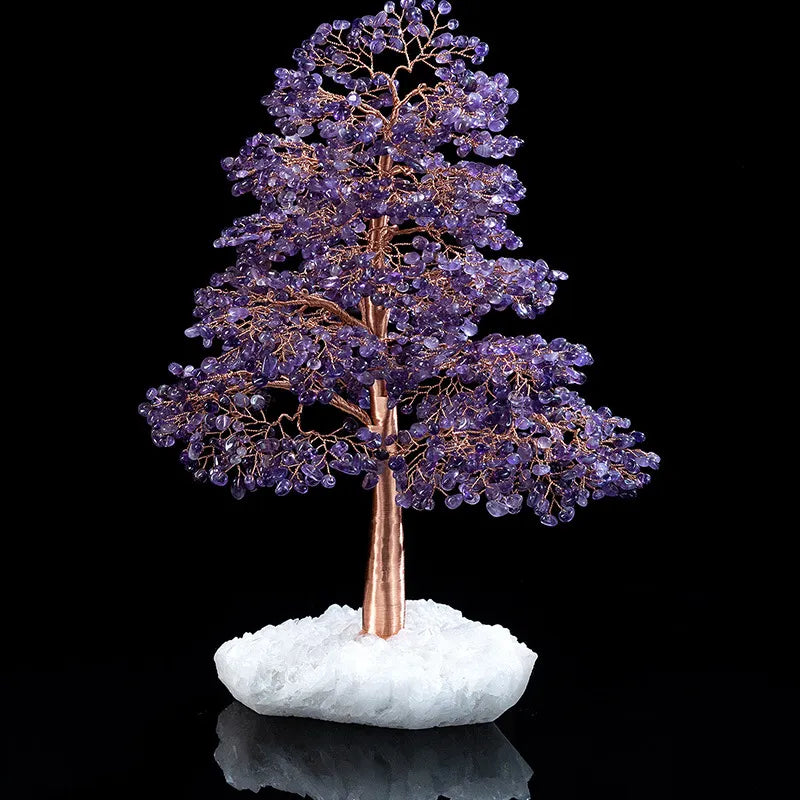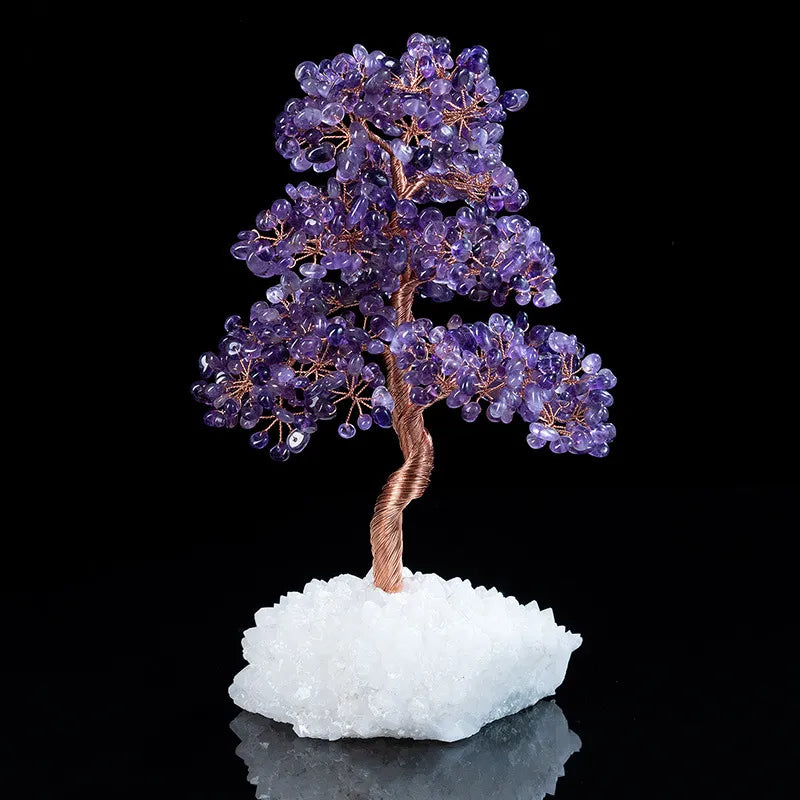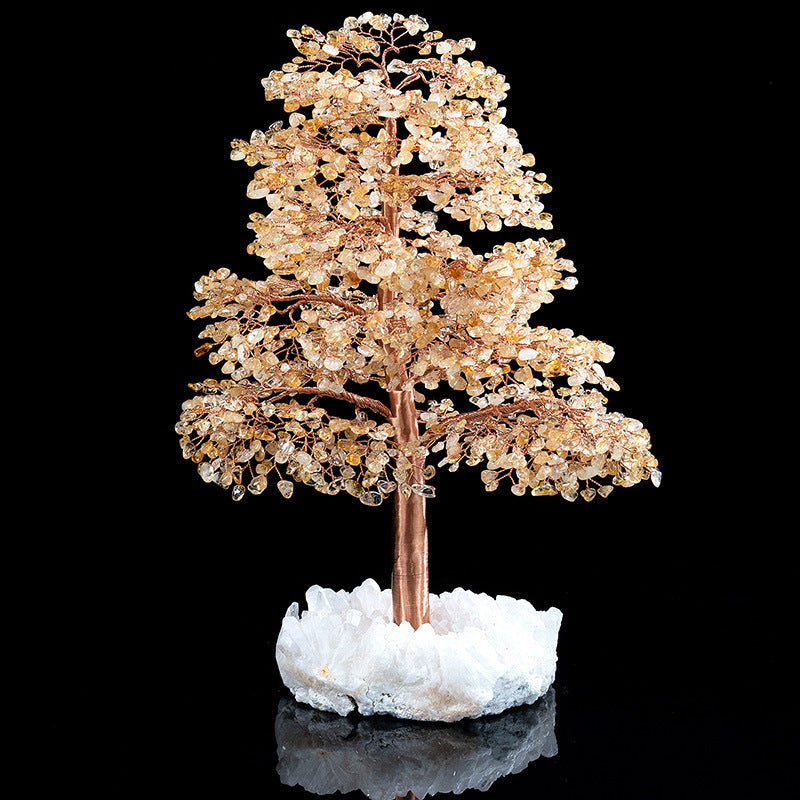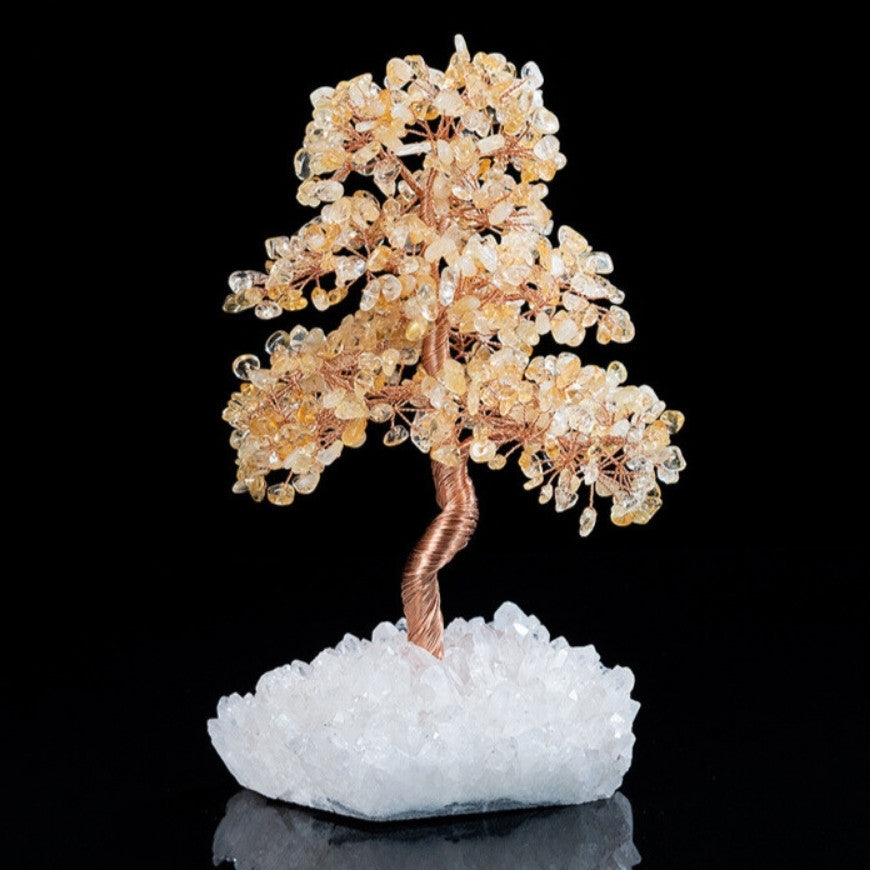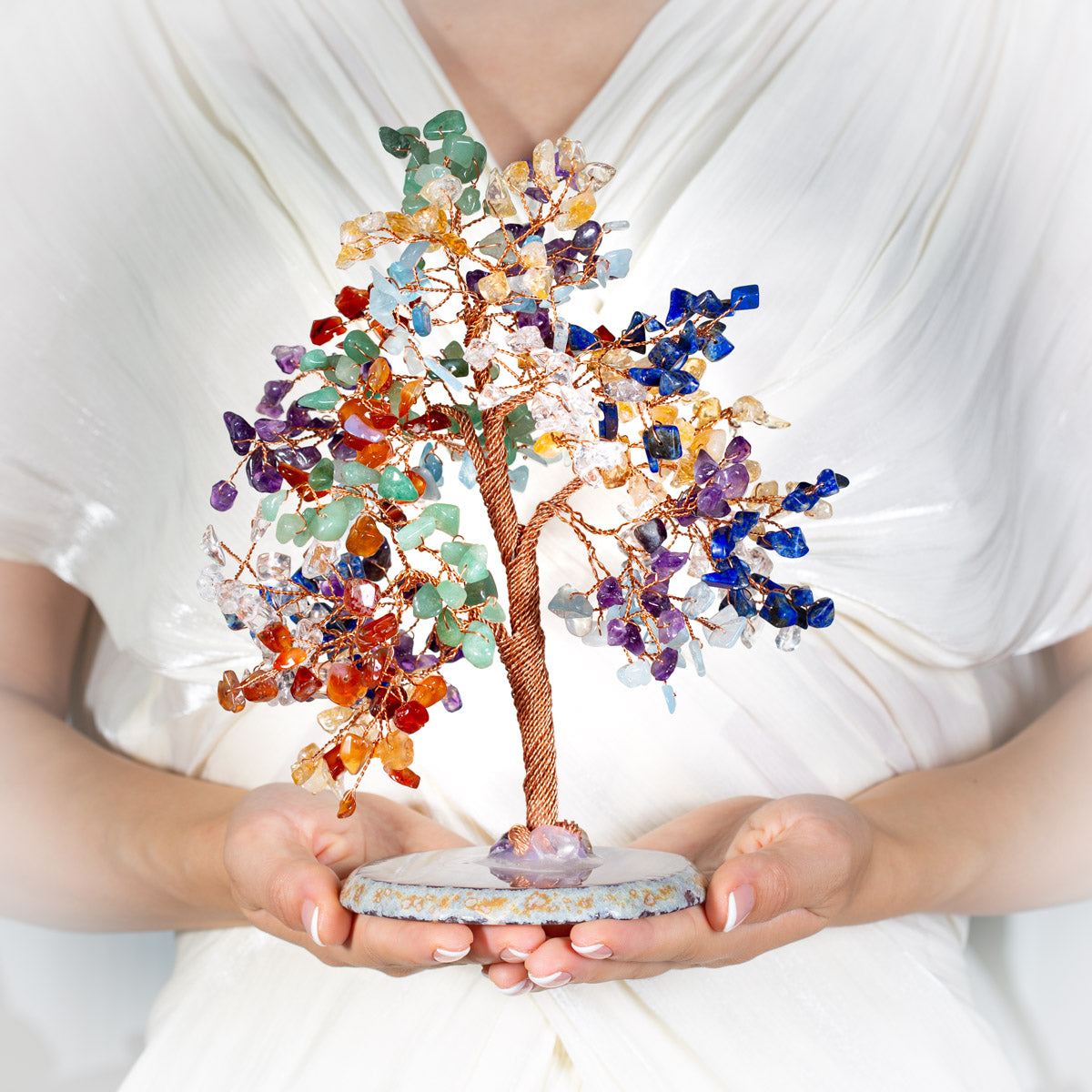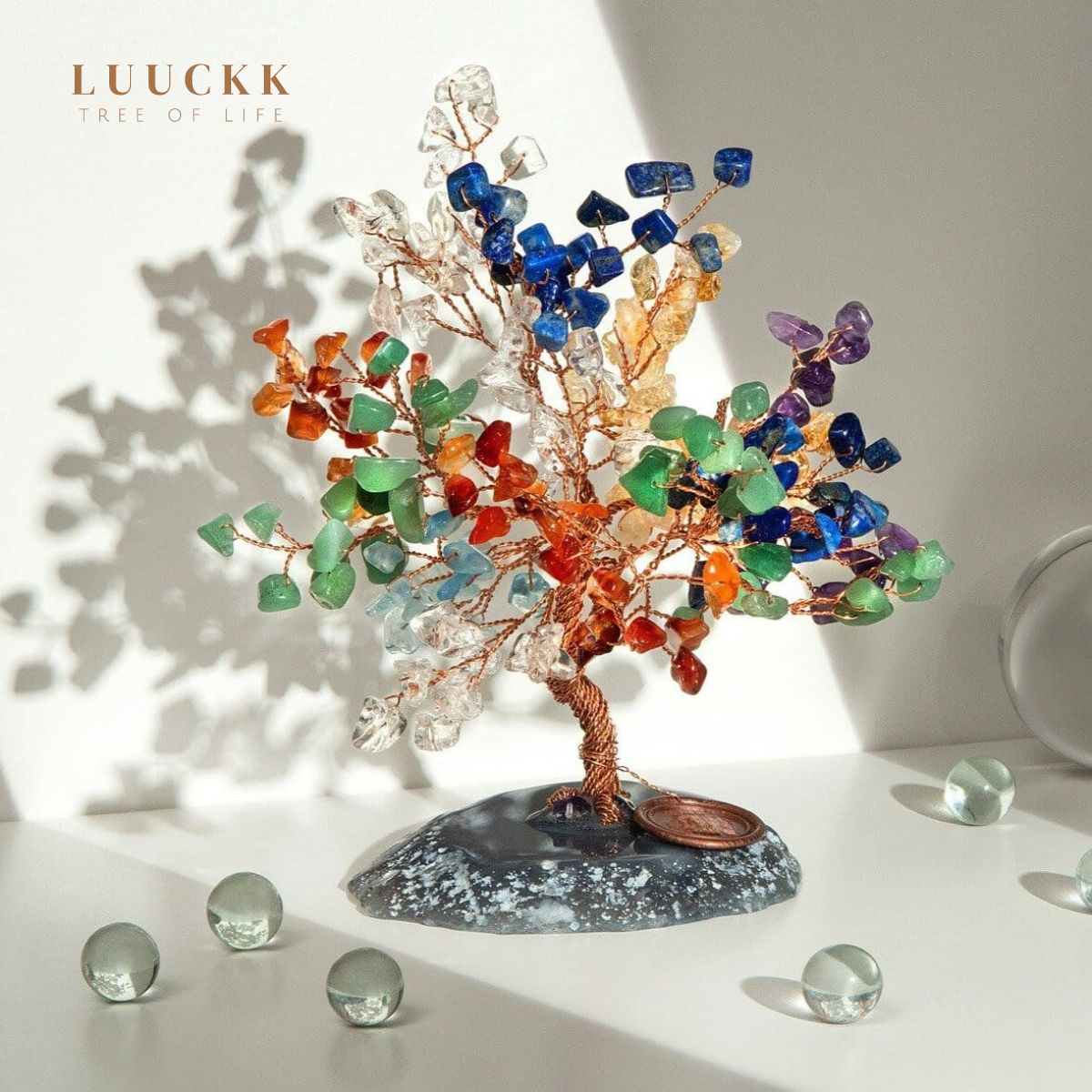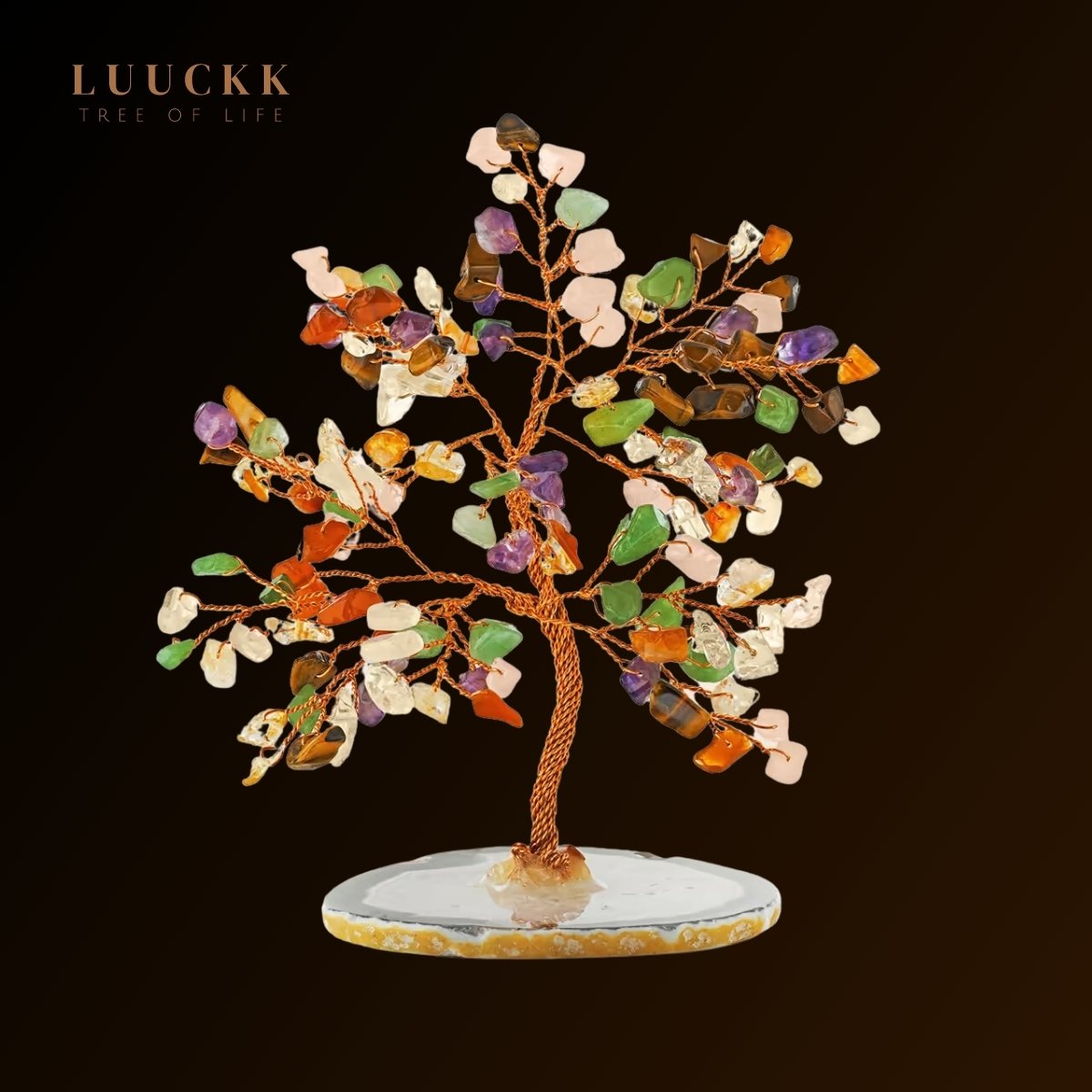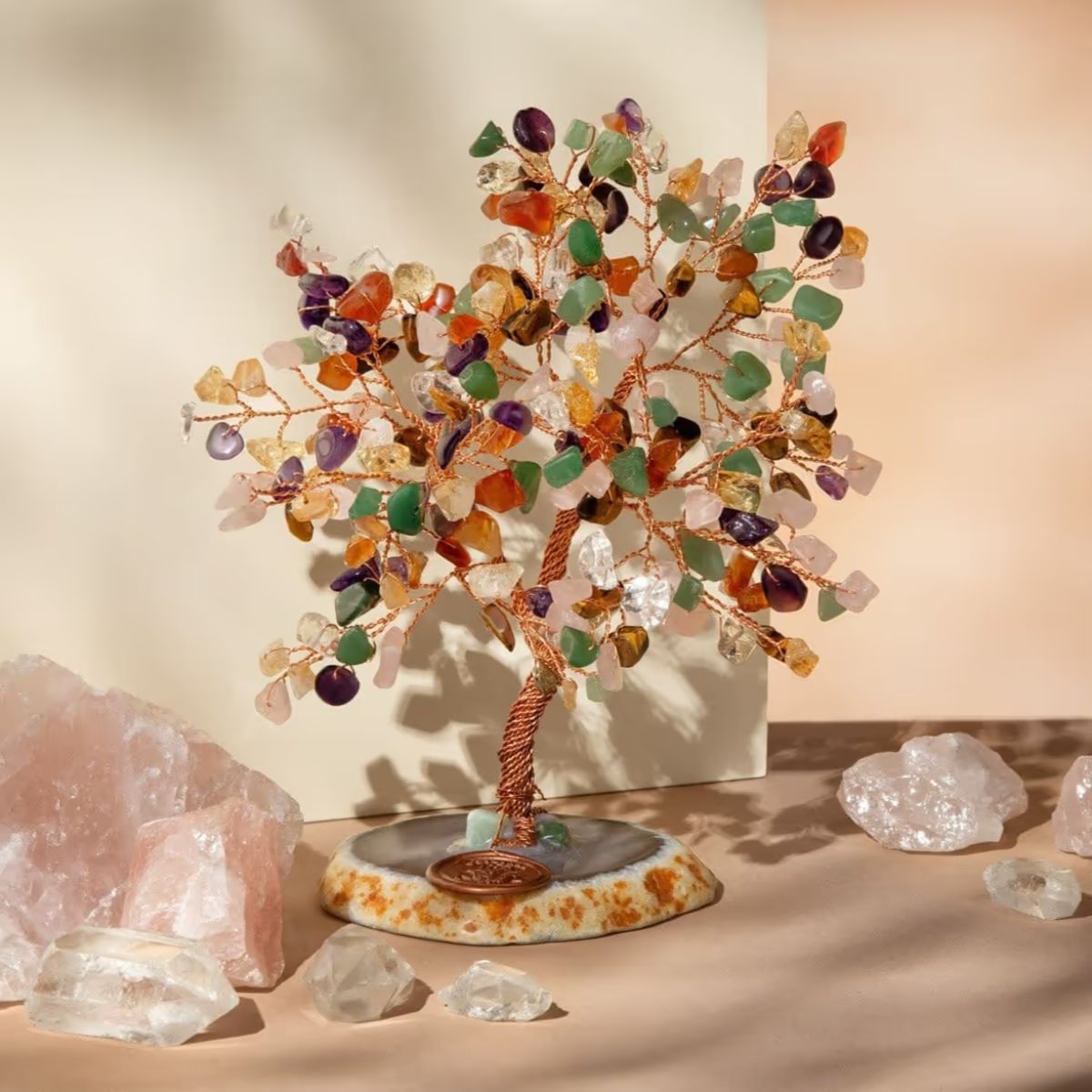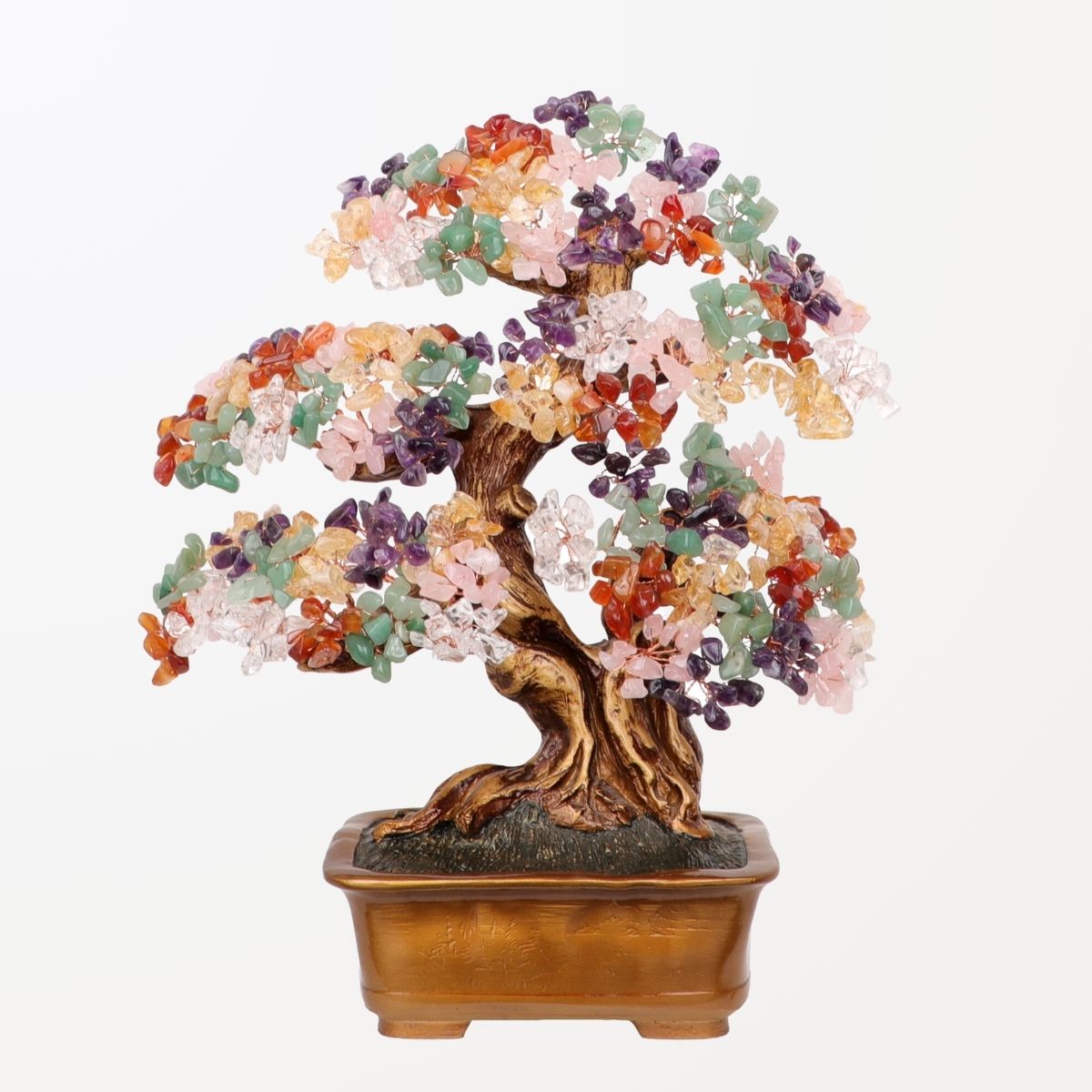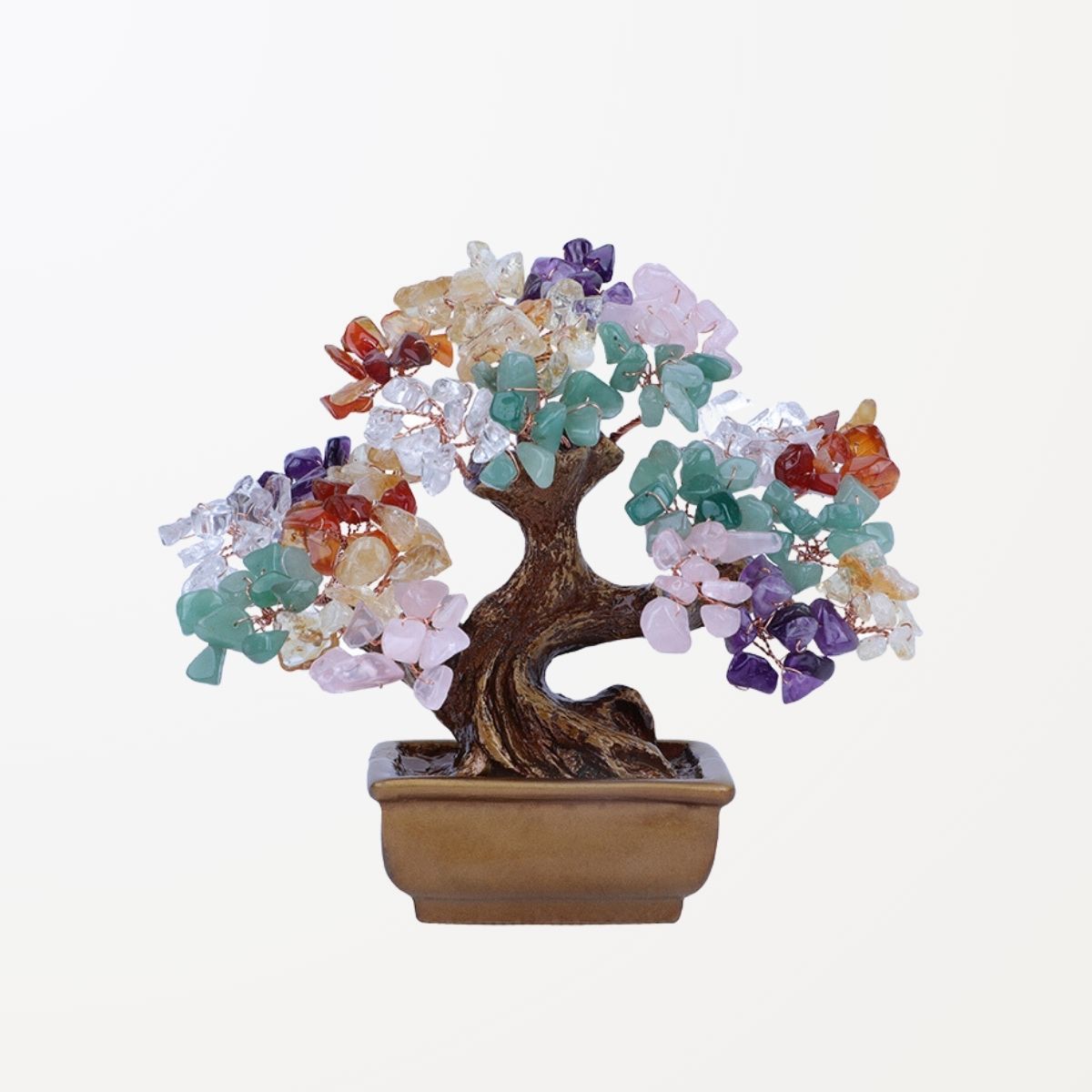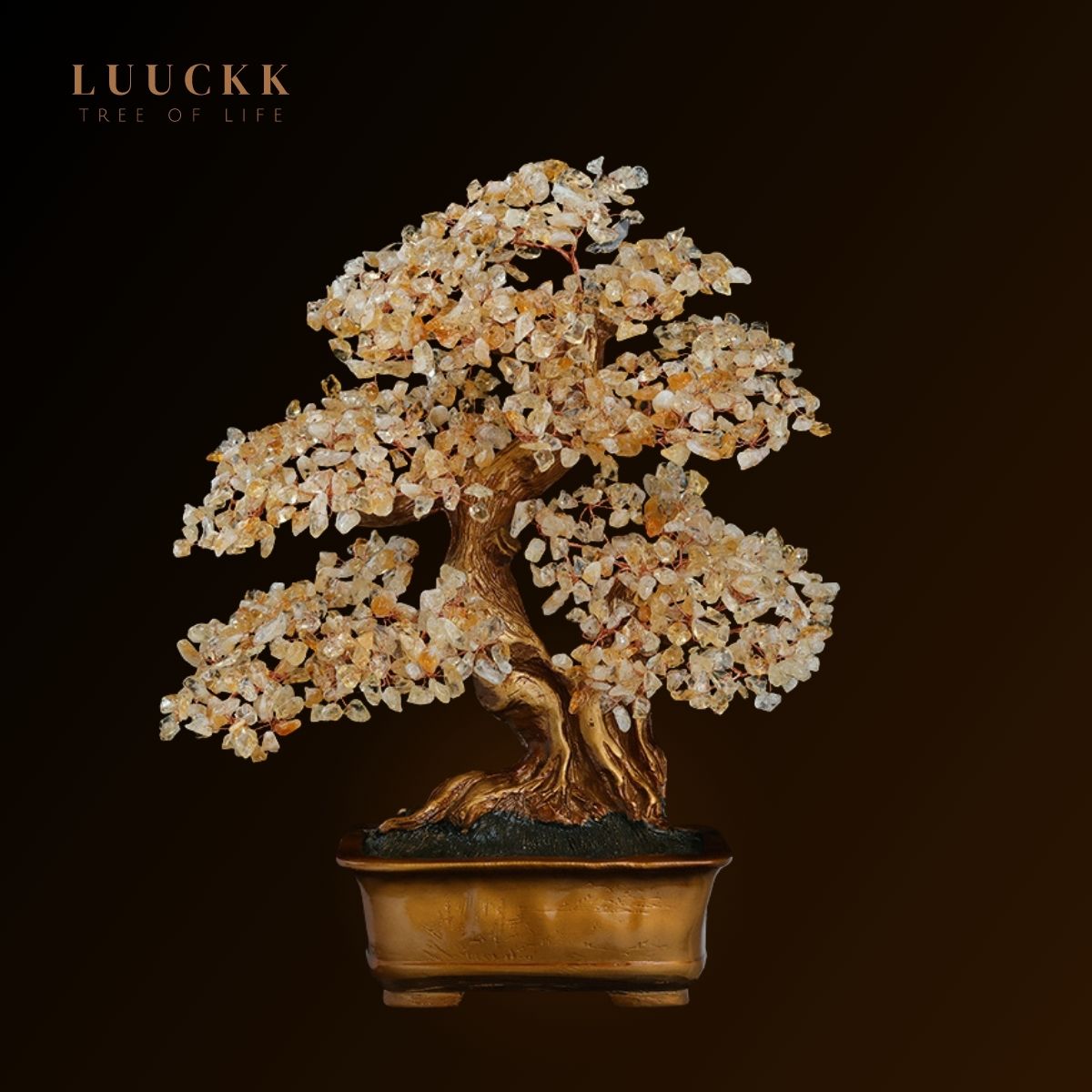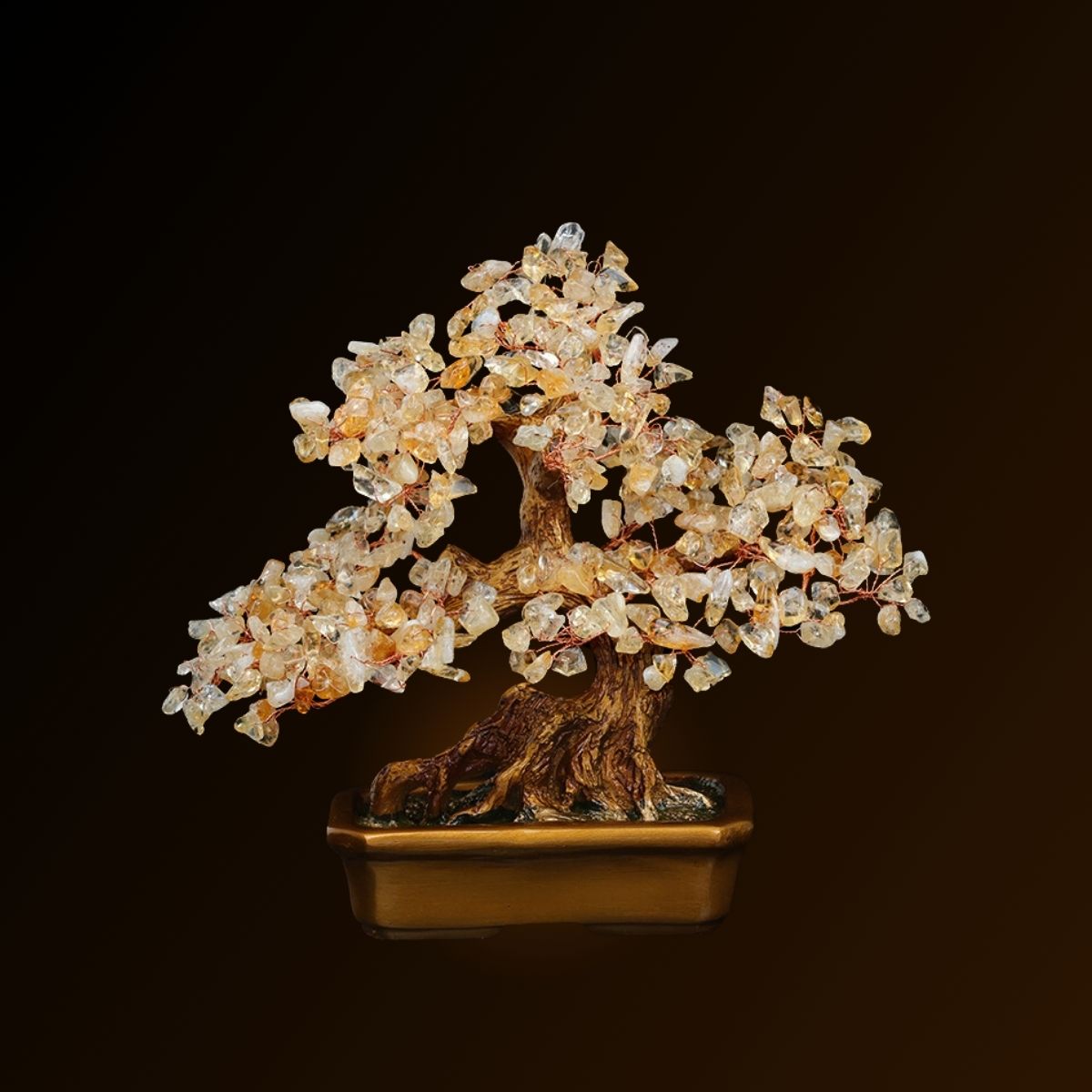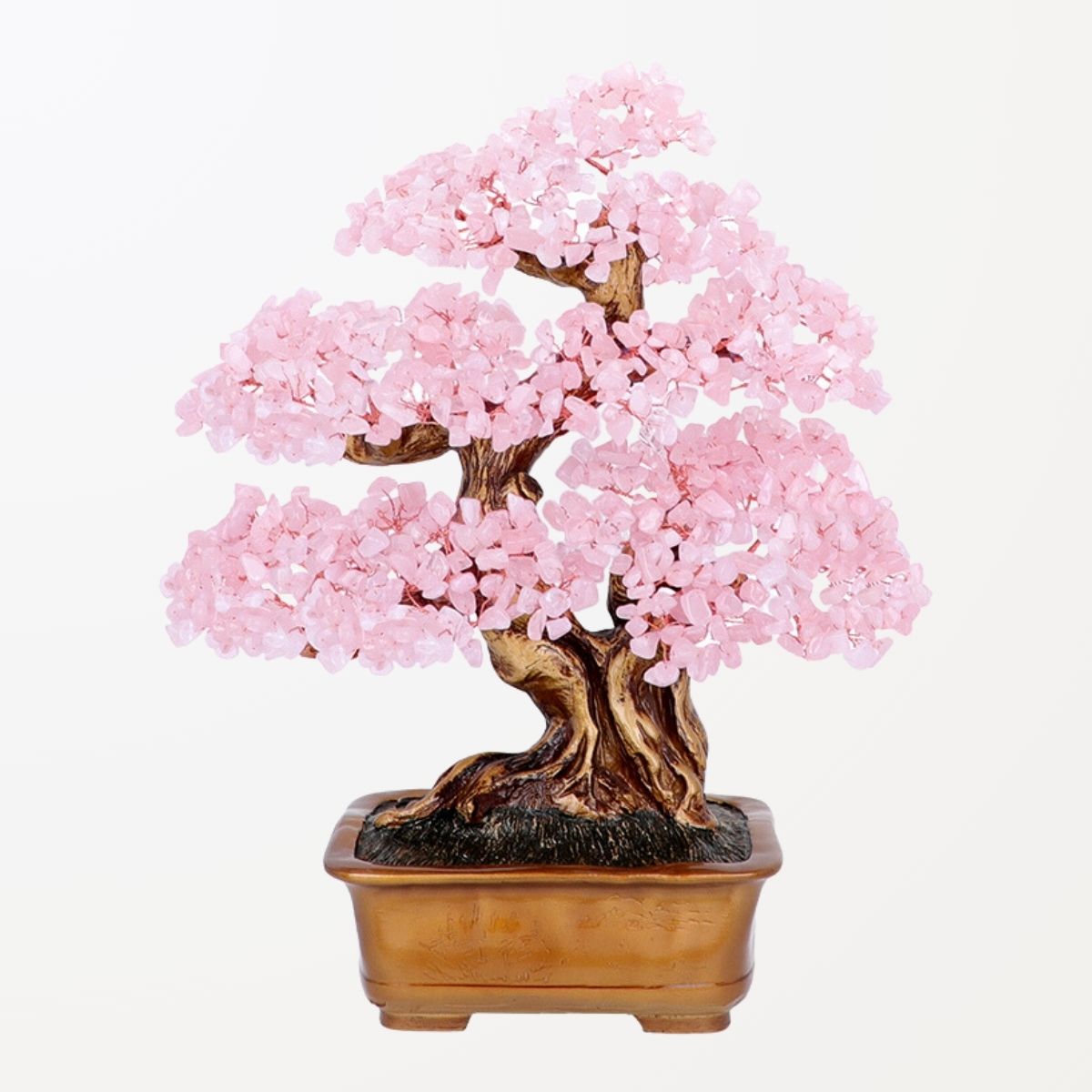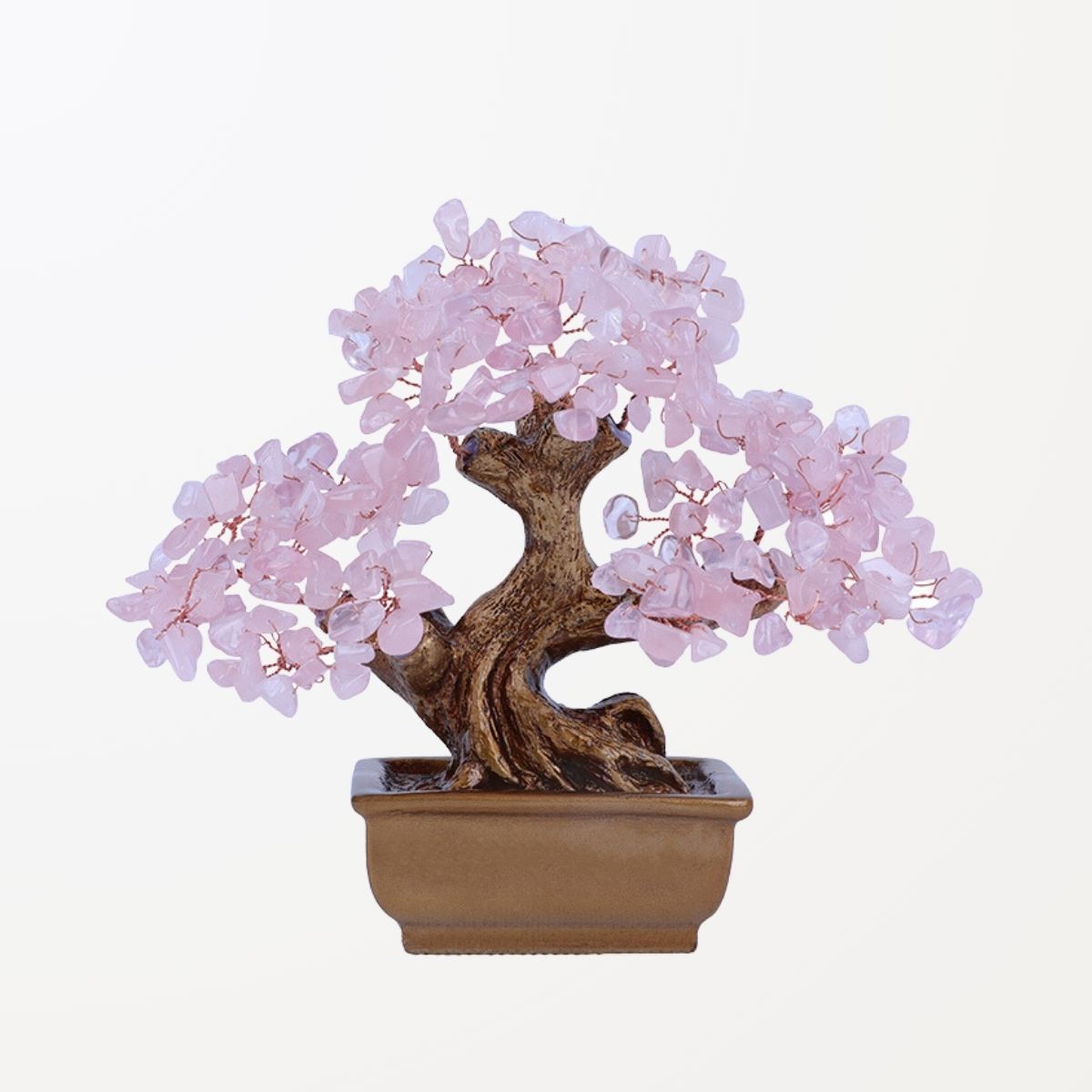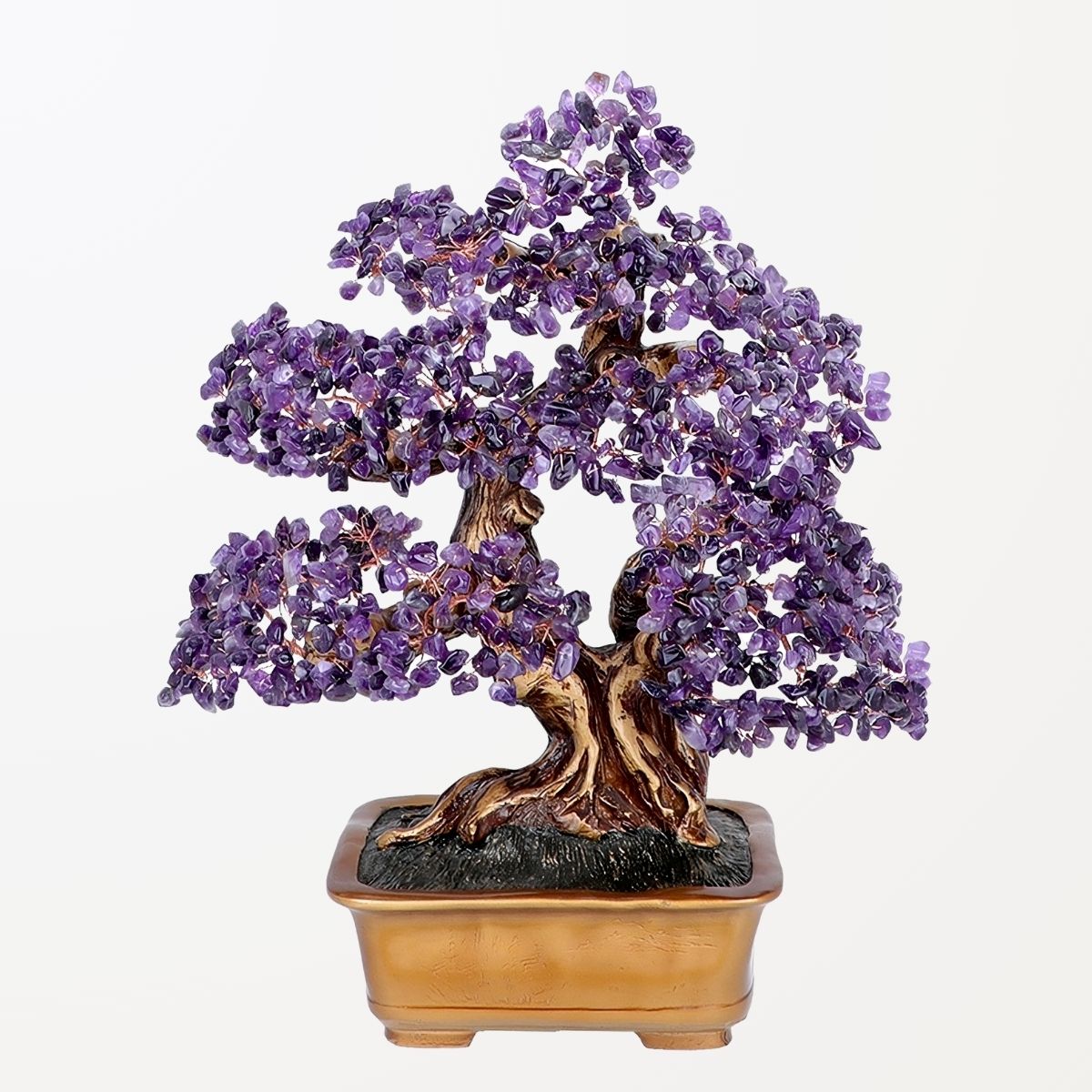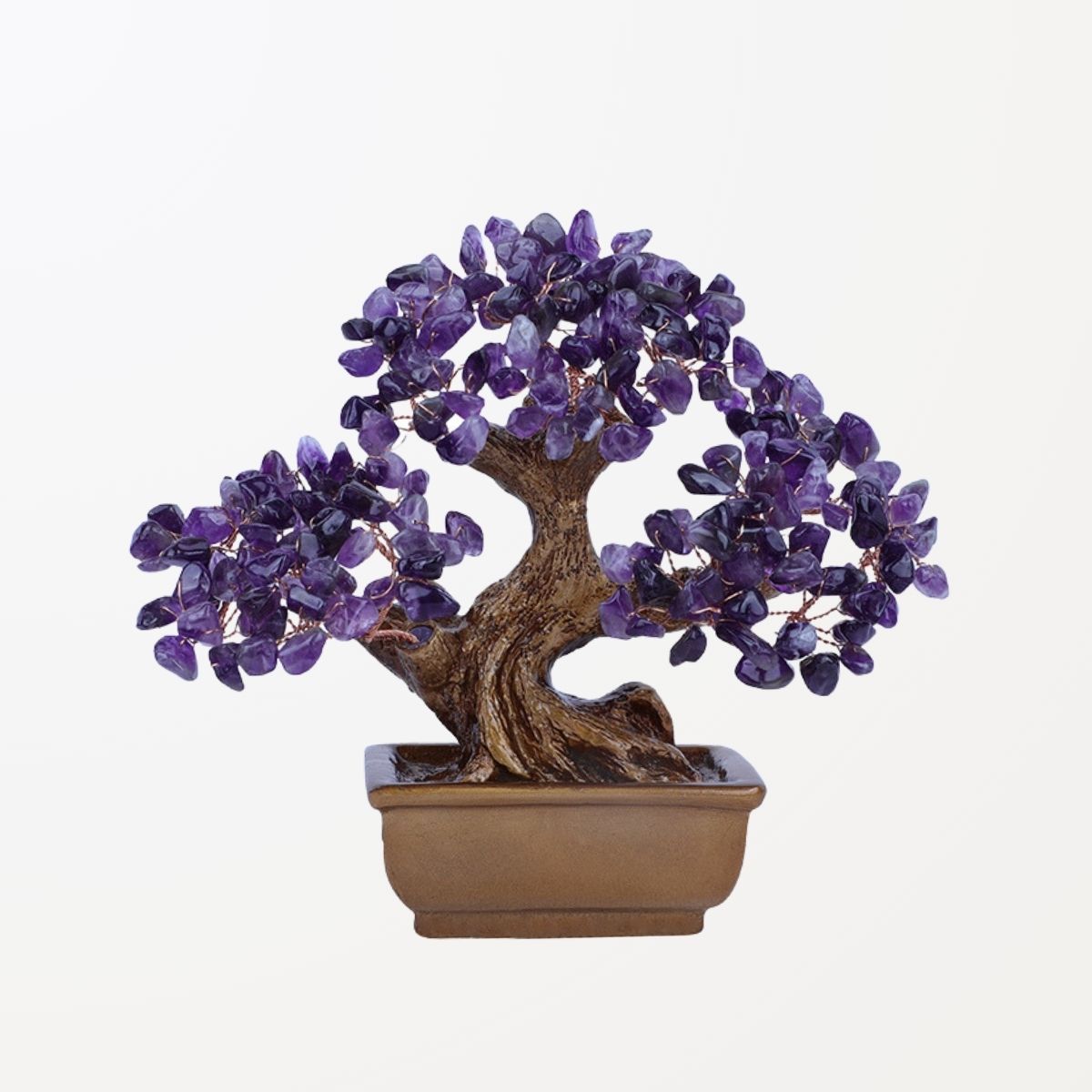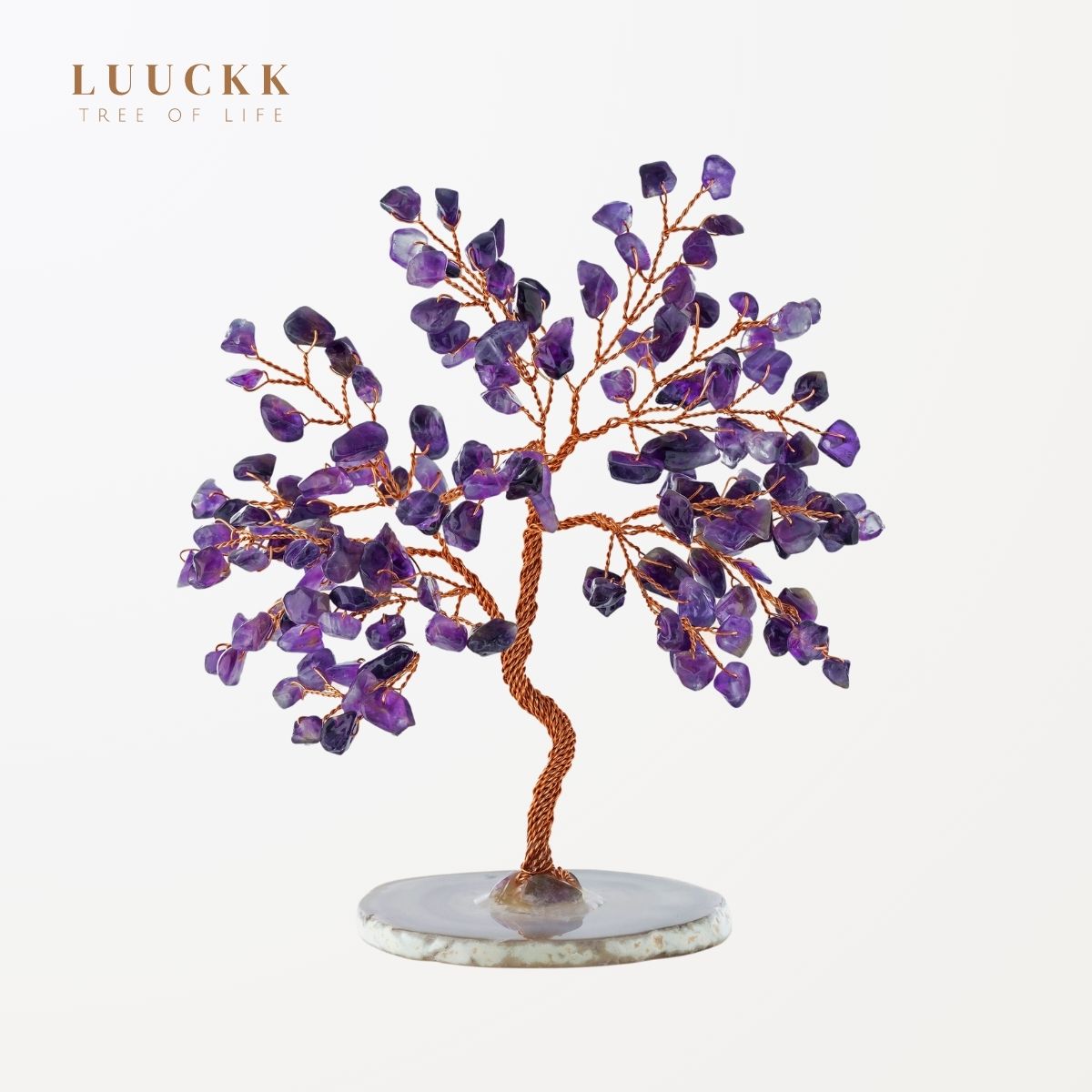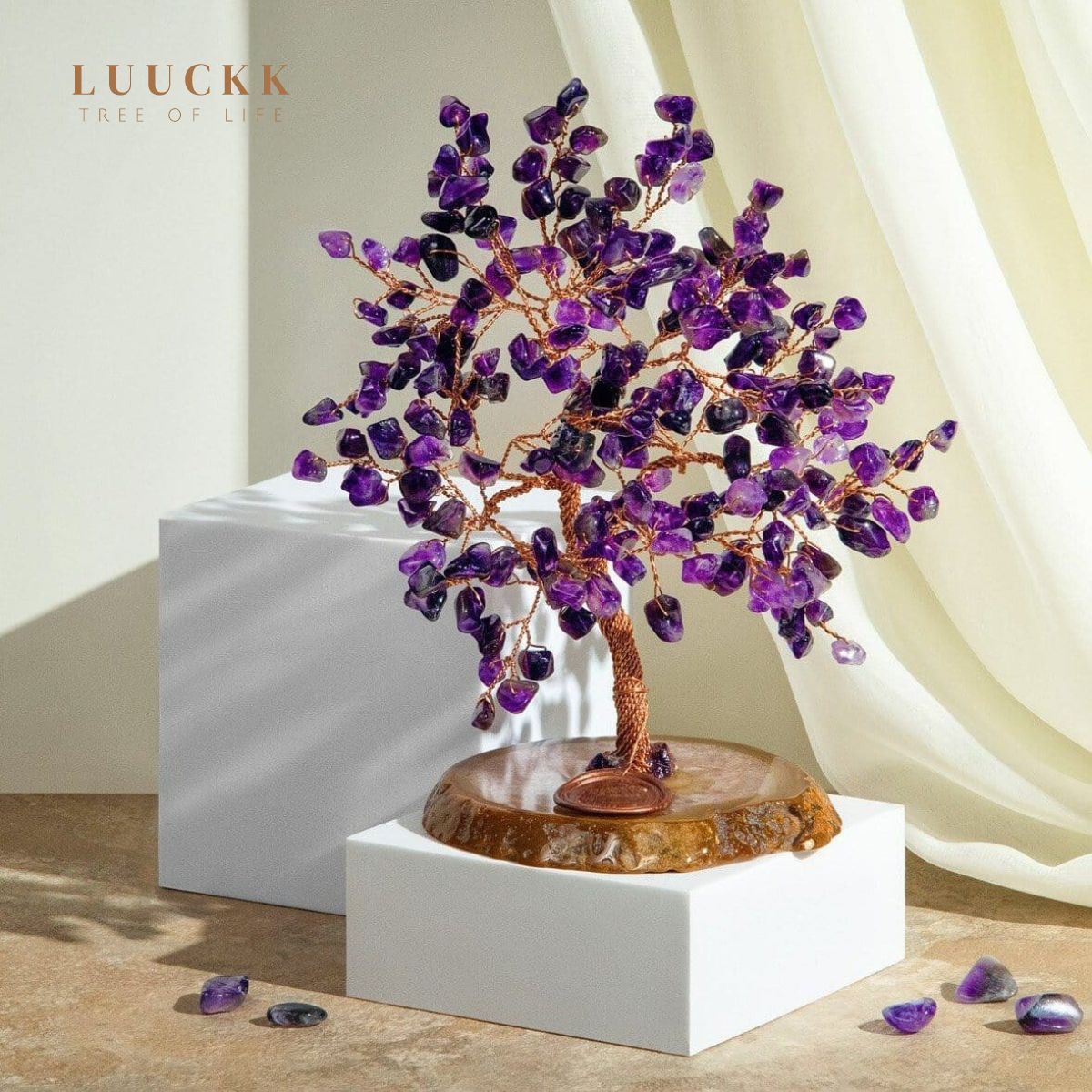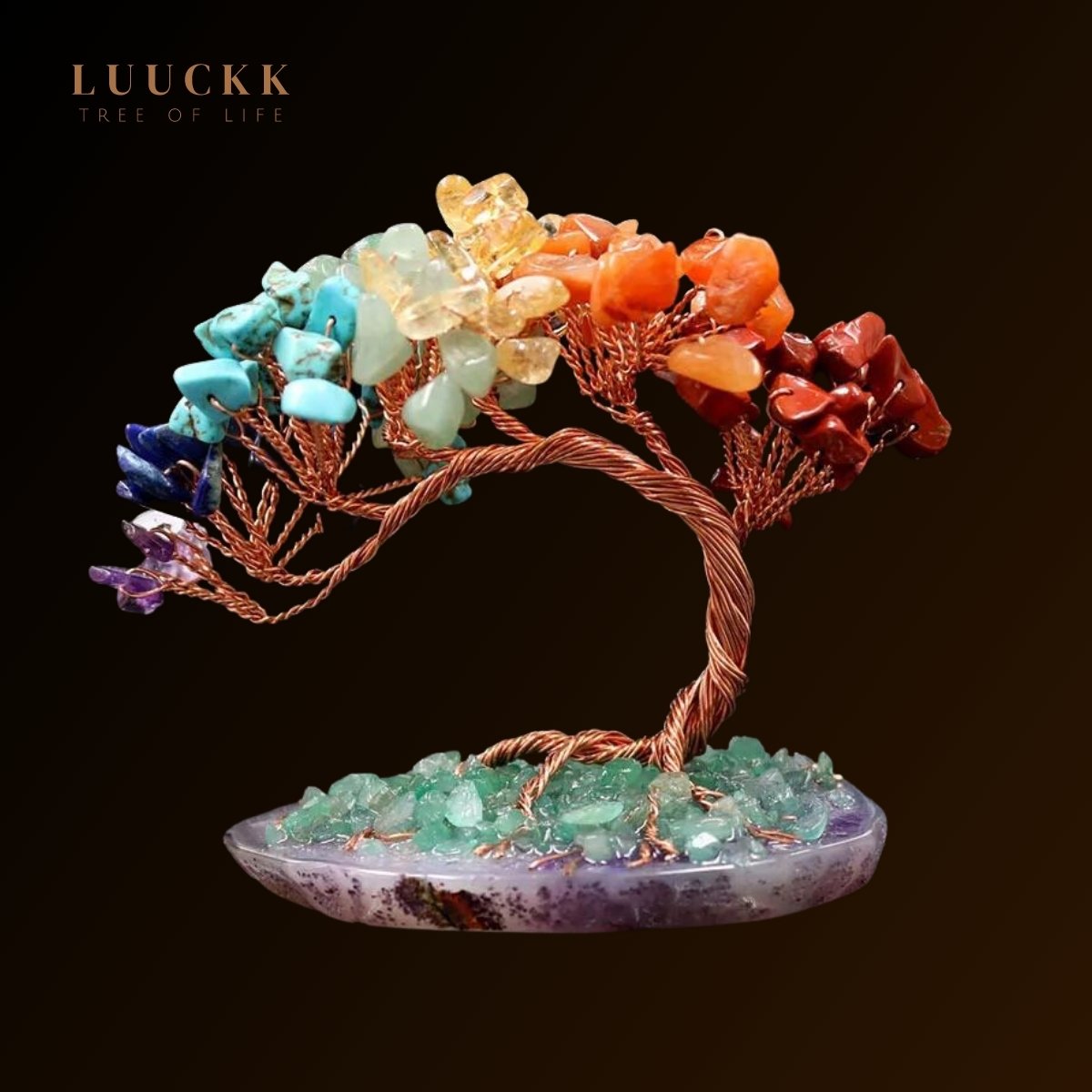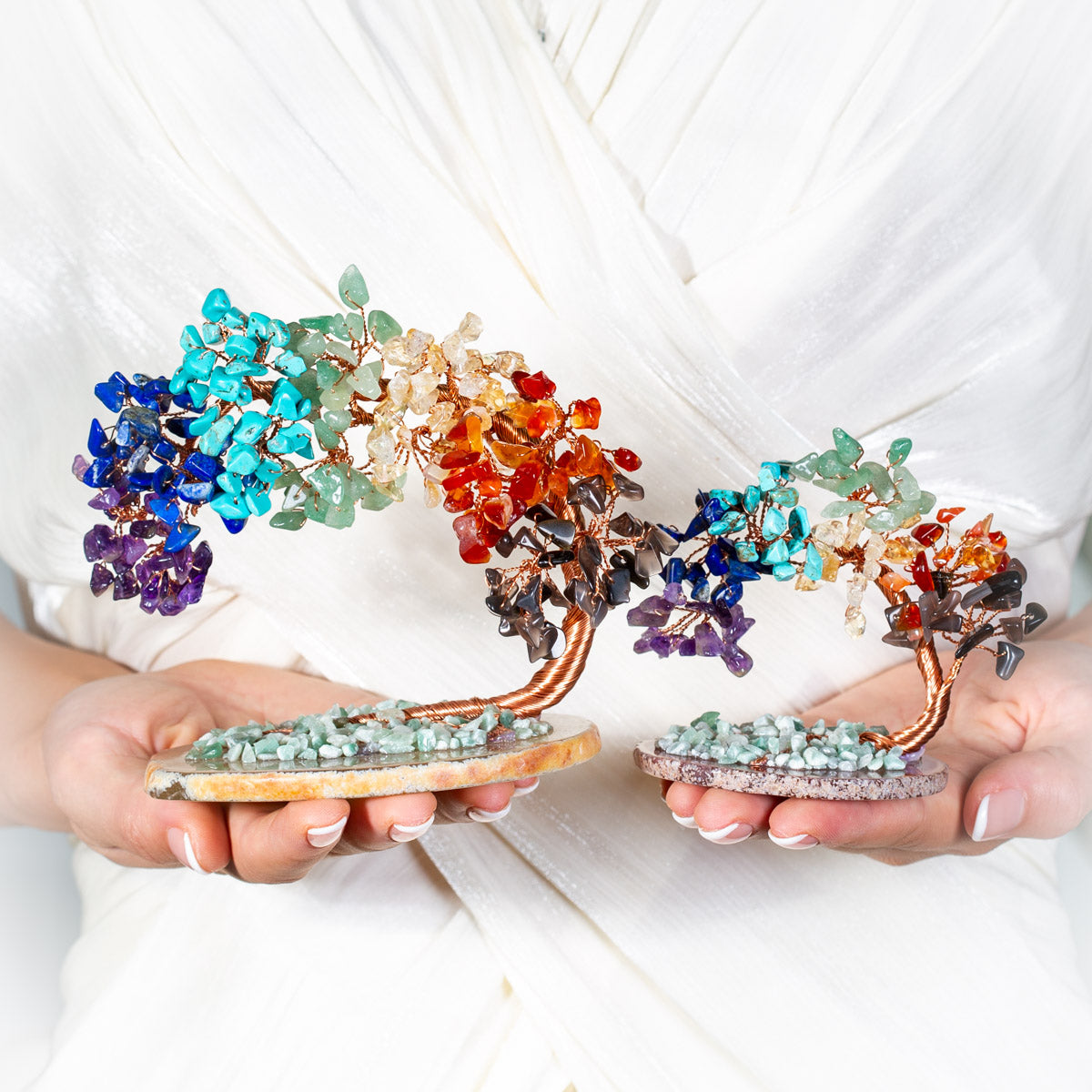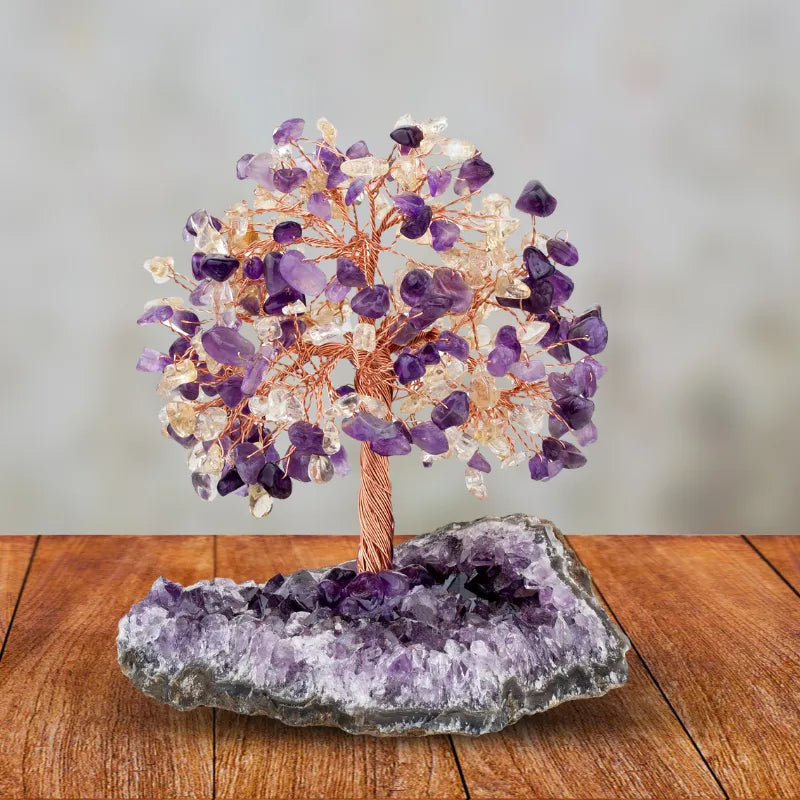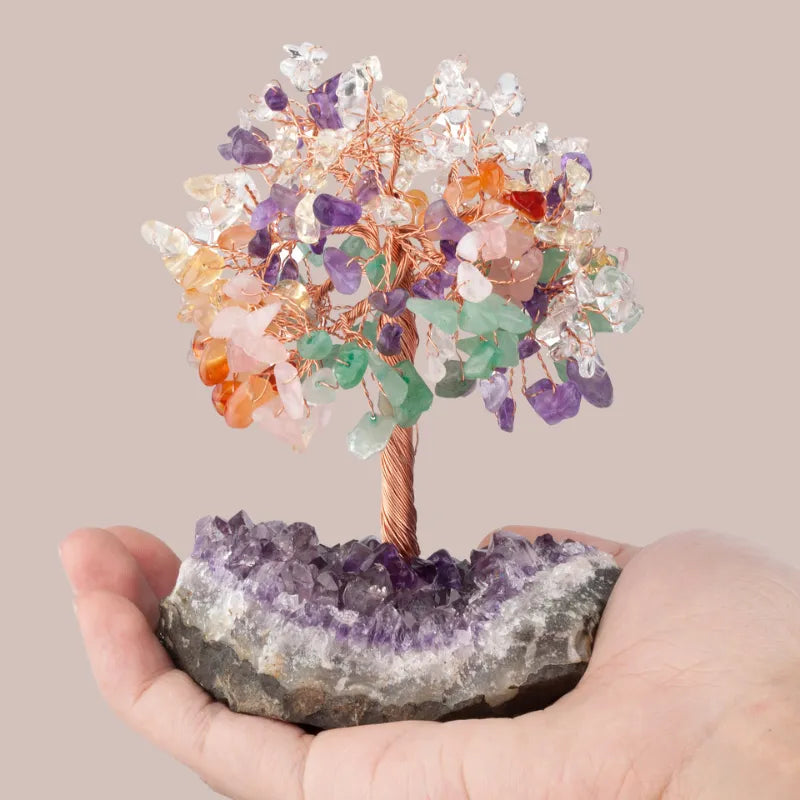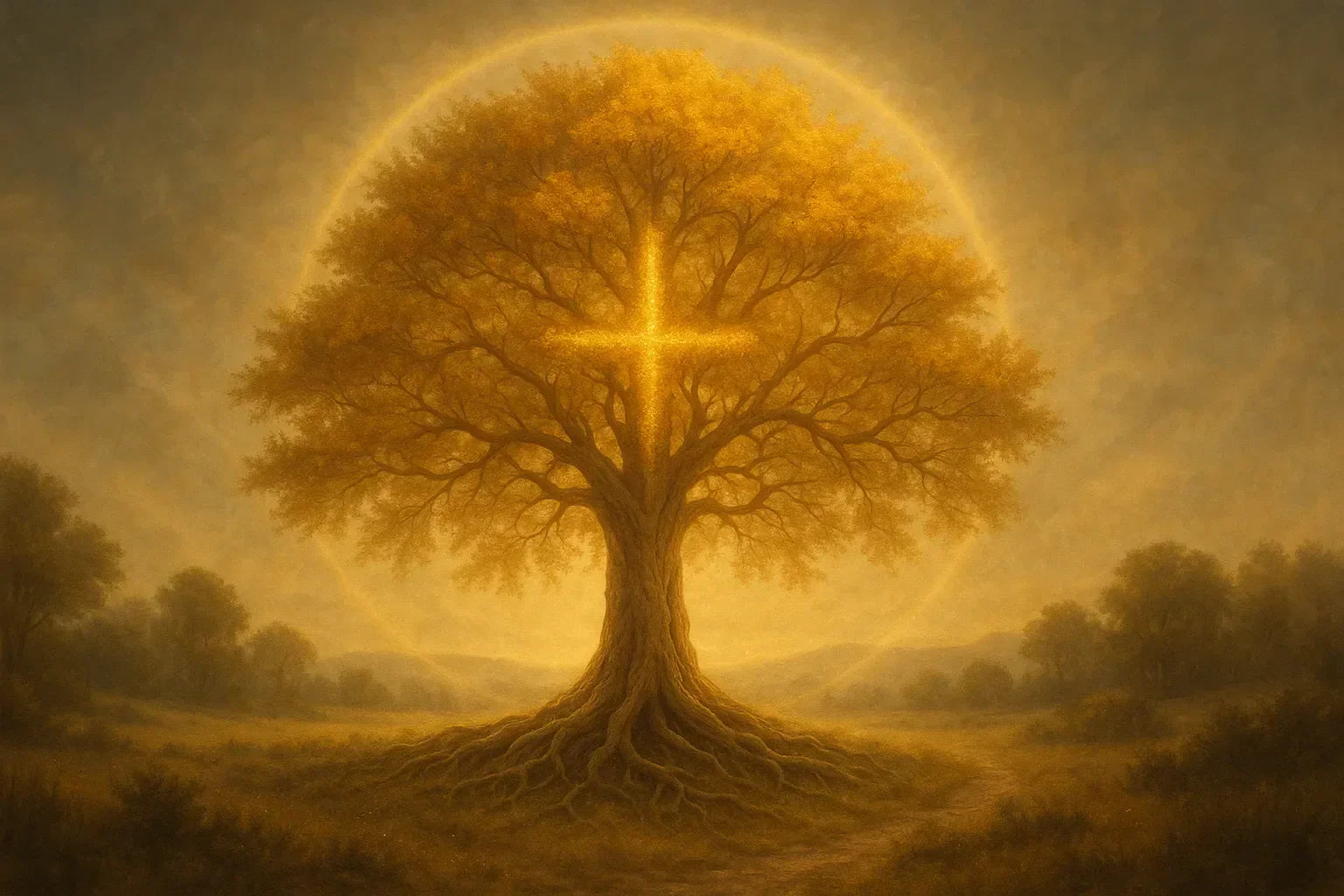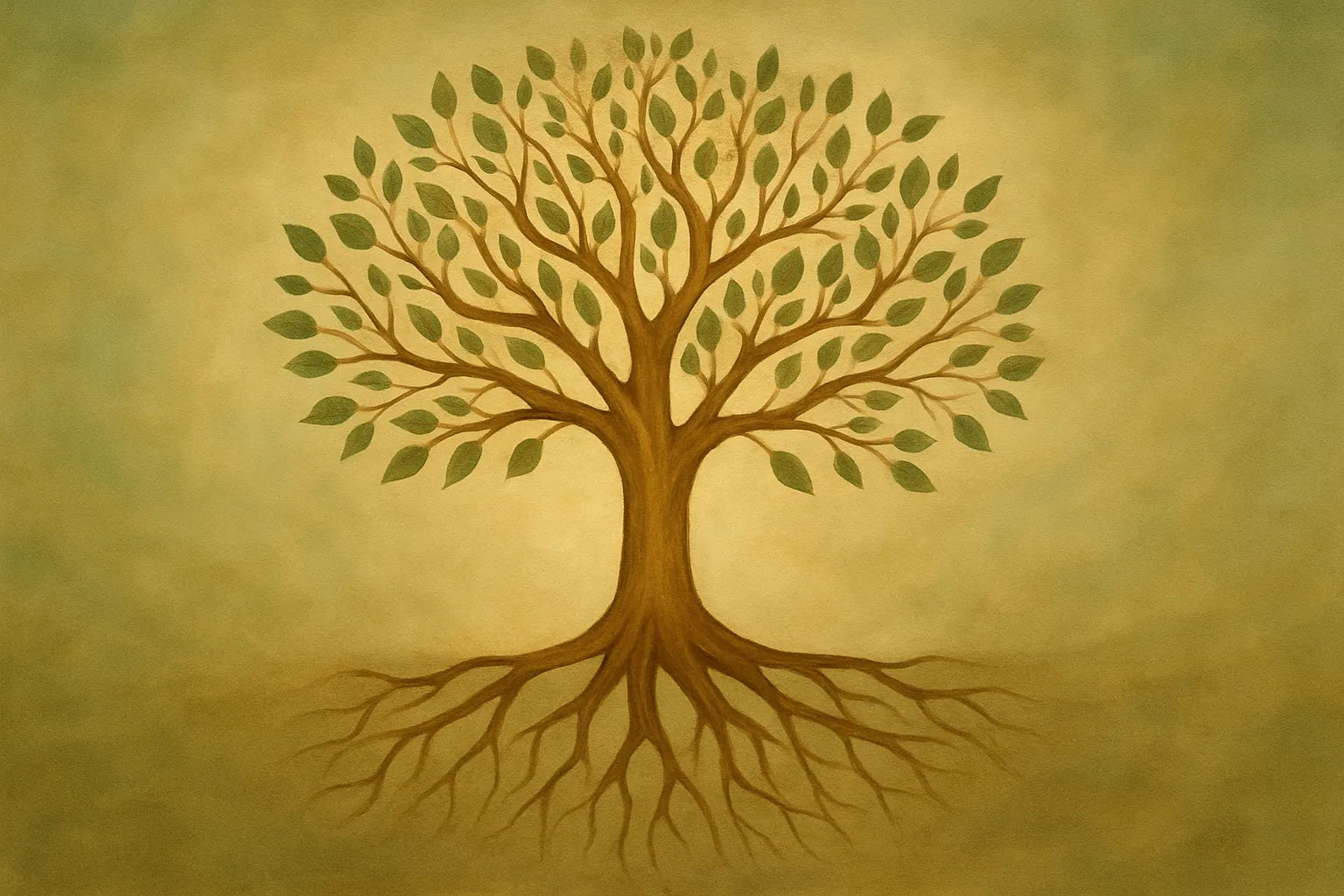
Tree of Life and Feng Shui: Meaning, Use, and Customs
When Ancient Wisdom Meets Modern Harmony
Harmony. A word we often hear without truly experiencing it fully in our daily lives. Yet ancient traditions like Feng Shui have been teaching us for millennia the art of creating energetic balance in our environment. And at the heart of these practices, an age-old symbol captures our attention more than ever: Tree of Life.
But what role does the Tree of Life play in a Chinese discipline like Feng Shui? What is its deeper meaning, and how can it be used to harmonize our living spaces? This article invites you on a journey between cultures, spirituality, and energetic traditions to discover the fascinating connection between Tree of Life and Feng Shui.
Tree of Life: A Universal Symbol with Ancient Roots
Long before becoming a decorative object or a trendy piece of jewelry, the Tree of Life was a universal symbol deeply rooted in the beliefs and traditions of many civilizations. Whether engraved on ancient stones, depicted in sacred manuscripts, or passed down orally, this symbol spans ages and continents.
Origin of the Symbol
The earliest traces of the Tree of Life date back over 5000 years, notably in Mesopotamia, within the ancient Sumerian and Babylonian cultures. It represented the connection between the worlds: the sky (branches), the earth (trunk), and the underworld (roots).
Spiritual Meaning
The Tree of Life symbolizes growth, renewal, grounding, strength, and the interconnection of all living beings. In many traditions, it represents the cycle of life, continuity between generations, and access to spiritual knowledge.
In our article Origin and Spiritual Meaning of the Tree of Life in Beliefs, we explored these dimensions in depth, highlighting interpretations from Celtic, Nordic, African, and Native American cultures.
What Is Feng Shui, and Why Does the Tree of Life Belong There?
Feng Shui is an ancient Chinese art aiming to harmonize energy (Chi) in a living space. Based on principles such as Yin and Yang, the five elements (wood, fire, earth, metal, water), and the flow of energy, it holds that our environment directly influences our physical, emotional, and spiritual well-being.
The Tree of Life as a Representation of Chi
In Feng Shui, every object, color, or shape has symbolic and energetic value. The Tree of Life, with its balanced form, outstretched branches, and deep roots, embodies the perfect circulation of energy between heaven and earth. It fosters balance between the material and the spiritual, between stability and growth.
Integrating it into a space can activate certain energy sectors, strengthening intentions like health, prosperity, and inner peace.
Meaning of the Tree of Life in Feng Shui: More Than Decoration
Placing a Tree of Life in your home or office is not only about aesthetics. It’s a strong energetic intention that works on multiple levels.
An Activator of Vital Energy
Feng Shui relies on the smooth flow of Chi. The Tree of Life, with its natural, symmetrical shape, helps redistribute stagnant energy, especially in dull or cluttered spaces.
Grounding and Rooting
The roots of the tree remind us of the importance of grounding, essential for emotional stability. It is therefore recommended to place a Tree of Life in a room dedicated to meditation or rest to promote inner calm.
Growth and Prosperity
Its branches reaching toward the sky symbolize openness, ambition, and self-realization. Placed in a workspace, a Tree of Life can represent professional growth and project development.
A Bridge Between Energies
In some Feng Shui schools, the Tree of Life is used to reconnect energies cut off between different areas of the home, especially when rooms are missing (according to the Bagua) or there are structural imbalances.
For more details on the spiritual and energetic virtues of this symbol, consult our article: Meaning of the Tree of Life and Benefits.

Where and How to Place a Tree of Life According to Feng Shui
The placement of a Tree of Life is crucial for it to fully radiate its energy. Here are some recommendations inspired by traditional Feng Shui.
In the East: Health and Family
The East is associated with health and family stability. Placing a Tree of Life in this area strengthens family bonds, vitality, and harmony in the home.
In the Southeast: Prosperity and Abundance
This area governs wealth and abundance. A Tree of Life made from natural stones like citrine or jade can be an excellent prosperity activator.
In an Office: Creativity and Professional Growth
At work, place a Tree of Life near your desk to stimulate creativity, focus, and career advancement.
In the Bedroom: Inner Peace and Relationships
A small Tree of Life made of rose quartz in a bedroom can soothe tensions, promote love, and encourage healthy relationships.
Precautions to Observe
-
Avoid placing the Tree of Life in dark, dusty, or cluttered areas.
-
Clean it regularly (energetically and physically).
-
Intention: set a clear intention when placing it.
Between Beliefs and Customs: The Tree of Life in Cultures and Religions
Feng Shui is not the only tradition to give the Tree of Life a sacred dimension. Around the world, this symbol has been interpreted according to diverse religious, mystical, and philosophical codes.
In Christianity
In the Genesis, the Tree of Life is at the center of the Garden of Eden. It represents immortality, access to God, and eternal life. In the New Testament, it symbolizes the return to paradise after redemption.
See also our article: Meaning of the Tree of Life in Christianity
In Islam
In Islamic tradition, the Tree of Life (Shajarat al-Hayat) is sometimes associated with the tree of paradise, distinct from the tree of knowledge. It embodies divine mercy and the connection between God and humanity.
See also our article: What Does the Tree of Life Mean in Islam?
In Other Religions
-
Judaism: the “Etz Chaim” or Tree of Life represents divine wisdom in Kabbalah.
-
Buddhism: the sacred fig tree (or Bodhi) under which Buddha attained enlightenment.
-
Nordic Traditions: Yggdrasil, the cosmic ash, connects the nine worlds.
See also our article: The Tree of Life in Religions: Symbols and Interpretations
Modern Customs and Contemporary Spirituality
Today, the Tree of Life is experiencing a true resurgence, especially in the fields of personal development, conscious decoration, and energetic practices.
Jewelry and Talismans
Wearing a Tree of Life necklace or bracelet is not only a matter of style. Many see it as a talisman of protection, spiritual connection, and personal growth.
Decoration and Intention
In modern interiors, the Tree of Life appears as paintings, wall sculptures, lamps, or even wall stickers. When placed consciously, it becomes a true vector of intention and an energetic anchor point.
Meditation and Visualization
Some practitioners use the image of the Tree of Life in their meditations to strengthen grounding, visualize goals, or reconnect body and mind.

In Summary: Why Bring a Tree of Life Home?
The Tree of Life is not just a decorative object. It is a powerful symbol capable of restoring harmony, stimulating energy, and reminding us of deep values such as growth, balance, continuity, and spirituality.
By integrating it into your space according to Feng Shui principles, you encourage the flow of vital energy while adding an aesthetic and symbolic touch to your interior.
Ready to Harmonize Your Space with the Tree of Life?
Our store offers you an exclusive collection of natural stone Trees of Life, carefully crafted and inspired by Feng Shui principles. Whether for your living room, your office, or your meditation corner, you will find the Tree that matches your intention.
Discover the collection now and let the energy of nature transform your daily life.
Further Reading
Here are some additional articles to deepen your knowledge:
FAQ – Tree of Life and Feng Shui
1. What is the meaning of the Tree of Life in Feng Shui?
The Tree of Life symbolizes balance, growth, and the connection between heavenly and earthly energies. It fosters harmony in a space.
2. Where should I place a Tree of Life in a home according to Feng Shui?
It is recommended to place it in the East (health), Southeast (prosperity), or in an office to activate positive energy and encourage growth.
3. Does the Tree of Life attract positive energies?
Yes, according to Feng Shui, it helps circulate Chi, protects against negative energies, and reinforces inner peace.
4. Can you use a Tree of Life made from natural stones?
Yes, natural stones amplify the energetic properties of the symbol. Rose quartz, amethyst, or citrine are particularly recommended.
5. Is the Tree of Life linked to a specific religion?
No. It is present in many religions and cultures, including Christianity, Islam, Judaism, and Celtic or Asian beliefs.
6. Is the Tree of Life considered a good luck charm?
Yes, it is often regarded as a talisman of protection, wisdom, and abundance, both spiritually and materially.
Suggested Products
Best products
